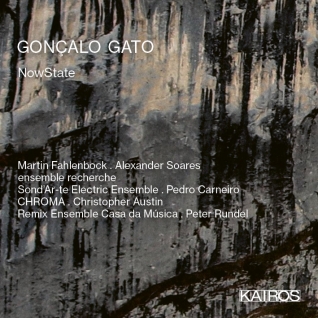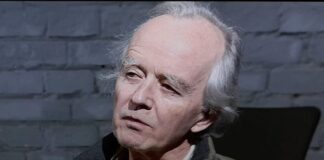The focus of much of the music of Lisbon-born, London-based composer Gonçalo Gato (b. 1979) is on the incorporation of computer algorithms into the compositional process. To judge from the work included in NowState, his Kairos monograph album, “incorporation” means “augmentation of” or “aid to” rather than “replacement of” the intuitively human, affectively guided processes of composing without computers. On the evidence of the sound of the pieces collected here, digital tools seem for Gato simply to be a means of exploring a deeper interest in the possibilities inherent in elementary musical materials.
This interest is addressed explicitly in Elementos (2018), a four-movement work for piano trio. Gato dedicates each movement to a basic musical value or convention: in order, melody; the ostinato; rhythmic pulse; and sonority. In his handling of these elements Gato breaks things down to basics. For example, in the melody movement he works initially with fragments of lines and with simple, continuously upward-moving pitches—building blocks of melodies rather than fully-achieved melodies themselves. Similarly, his breaking rhythm up into on-and-off beats given to different instruments aurally decomposes pulse into its individual constituent units.
Gato’s aptitude for developing sounds and their combinations comes to the forefront in a work like #where_we’re_going (2018) for small chamber ensemble of strings, winds, brass and percussion. The piece features carefully built-up layers of long tones, elementary triadic harmonies evolving into richly complex chords, and a colorful separation of individual instrumental voices skittering across a surface of snare drum and percussion. Dégradé (2012), for flute/piccolo, clarinet/bass clarinet, violin, cello and piano, explores similar ideas by moving its melodies around among individual voices in order to highlight changes in timbre and corresponding changes in foreground/background distinctions.
In fact, the malleability of notions of foreground and background and the ways they affect the perception of instrumental color is an at leat implicit theme running throughout the ensemble pieces included on NowState. Despite the sophistication of the compositional processes that went into its making, the music on these pieces tends to deflect attention away from underlying structures and redirects it instead to the sheer beauty of the play of instrumental color along its surfaces. Call it the triumph of the human touch over machine logic.
In addition to its algorithmically-based ensemble works, NowState includes two works for solo piano and one for solo flute that were composed without computer assistance. A walk in the countryside (2016) for solo flute, beautifully played by Martin Fahlenbock, is a virtuoso piece that builds its melodic lines on a foundation of various extended techniques. Derivaçaõ (2008) for solo piano constructs itself through an increasingly elaborate set of variations on a two-note motif, gradually developing into vigorously contrapuntal music. The title composition, a solo piano work composed in 2018, is a triptych of three short pieces in which Gato reimagined the acoustic piano as an electronic synthesizer. Both piano pieces are ably performed by Alexander Soares.







